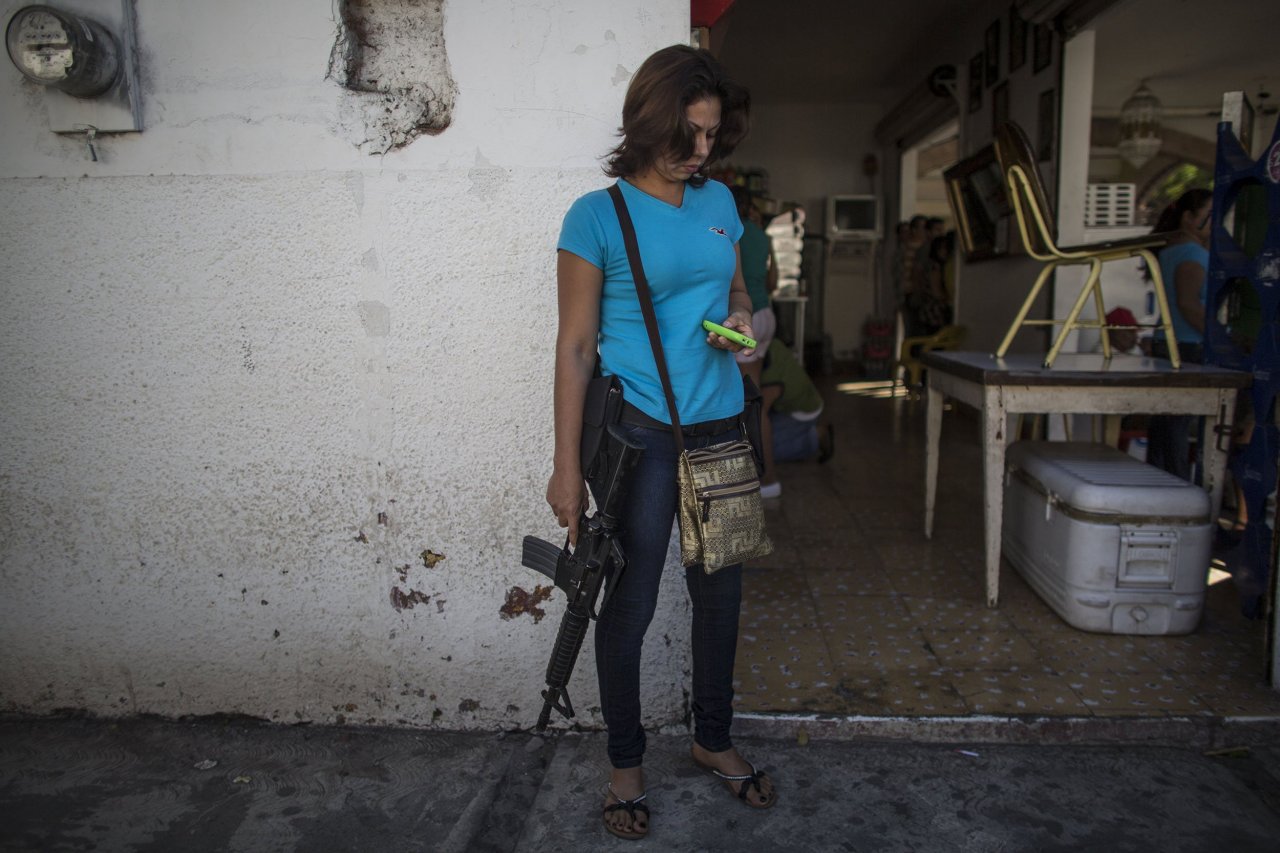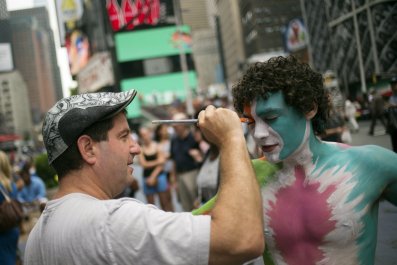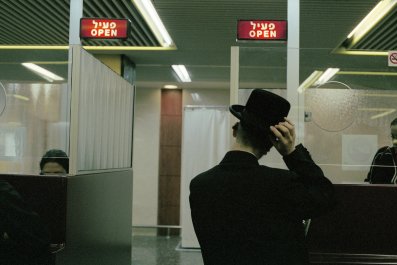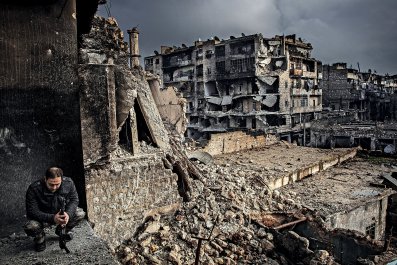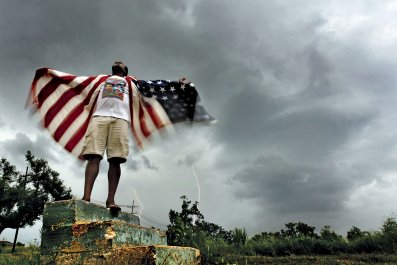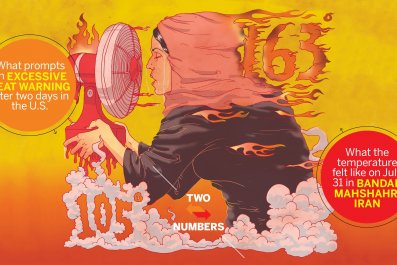It was a bucolic scene, except for the burly, glowering men with big guns. When I first met Cemeí Verdía Zepeda, this past December, he was sitting with his two young children in front of his home in Santa Maria Ostula, a small indigenous village in the central Mexican state of Michoacán. Surrounding them, however, were more than a dozen stone-faced bodyguards brandishing automatic weapons. For more than a year, a brutal drug cartel called the Knights Templar had been trying to murder Verdía, the first commander of Michoacán's autodefensas, vigilante groups operating in one of Mexico's most lawless regions.
"I will die before I give up my struggle," the 37-year-old said, comparing himself to Emiliano Zapata, a key figure in the 1910 Mexican Revolution. "I too am fighting for the autonomy of my people. I fight for their safety and their right to live a life without fearing criminals or corrupt officials."
Over the past few years, the vigilantes, a rowdy band of mostly farmers, have captured the imagination of their country. When the Knights Templar took their land, hoping to control the lucrative market for crops such as limes and avocados, the vigilantes piled into beat-up trucks, rumbled across the state's mountainous Tierra Caliente region and used pistols, rifles and even rakes to take back their farms. The autodefensas helped restore a sense of order to a region that has suffered considerably during Mexico's brutal drug war, a conflict that's left an estimated 100,000 or more dead since it began in 2006.
Despite the vigilantes' success against the drug gangs — and some would say because of it — the government had seen enough. The autodefensas were a heavily armed force outside the army's control, and some feared they could easily morph into yet another cartel. Over the past year, the vigilante groups have fallen apart as the federal government has persuaded some among their ranks to join the police, which critics say was effectively an attempt at a payoff. Those who tried to keep the autodefensas together haven't been successful either. In late July, Verdía, one of the last vigilante leaders still operating in the area, was arrested by Mexican soldiers in the town of La Placita on charges of theft, illegal arms possession and murder. In early August, a federal court absolved him of the last charge, but he remains in prison. His arrest provoked an angry reaction from supporters in his hometown, who for hours blocked a bridge near the prison, demanding his release. The army arrived, the two sides clashed, and a 12-year old boy was shot and killed in the melee, though it's unclear who is responsible.
"It was never going to end well" for the vigilantes, says Miguel Ángel Sánchez, a local political commentator. Long-term, "there is really no way of preventing Michoacán...from being a hub for drug trafficking."
Perhaps so. With the autodefensas now largely defunct, residents of Michoacán say violence has flared again, as new drug gangs have occupied the Tierra Caliente. "First, there was La Familia, then the Knights Templar," Germán Ramírez, alias "el Toro" (the Bull), the newly appointed leader of Santa Maria Ostula's vigilantes, says of the cartels. "Now I wouldn't even be able to tell you which gang controls the area."
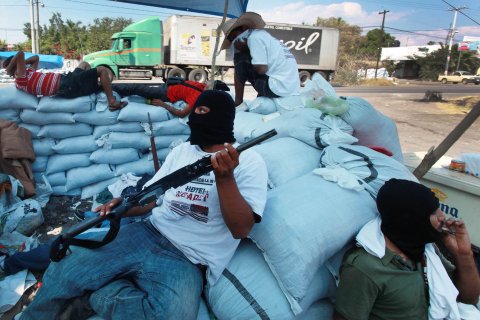
For as long as its inhabitants can remember, the Tierra Caliente has been a smugglers' paradise. Strategically located along a lucrative drug trafficking route, Michoacán's mountains and southern plains house countless meth labs and marijuana fields, while the large port city of Lázaro Cárdenas is an important transit point for shipping drugs north to the United States.
Until four years ago, the area was controlled by La Familia Michoacána, a ruthless drug gang known for decapitating rivals. Yet a civil war divided the cartel, and its offshoot, the Knights Templar, took over after a bloody turf war in 2011. Led by its new leader, an eccentric and media-hungry kingpin named Servando Gómez Martínez, aka "la Tuta" (the Teacher), the cartel began killing, kidnapping and extorting farmers for money on an unprecedented scale.
Locals accused the state and federal government of colluding with the gangsters or simply looking the other way. They began secretly stockpiling hunting rifles and other weapons. They organized themselves in small battalions and made plans to run the gangs out of their villages. A small number of vigilante groups had existed for years, including Verdía's. But it wasn't until February 24, 2013, that a large number of autodefensas took up arms under the leadership of José Manuel Mireles, a charismatic local doctor.
By the following January, the ranks of the vigilantes had swelled to an estimated 7,000 members. And when the autodefensas conquered Nueva Italia, a Knights Templar stronghold, most of the vigilantes went into battle with bulletproof vests and automatic weapons, which they said they had confiscated from fleeing narcos. Some even covered their SUVs with steel plating, turning them into makeshift armored vehicles.
After the vigilantes had driven most of the Knights Templar out of the Tierra Caliente, the federal government finally acknowledged that it had, at least partially, lost control of the region. In January 2014, President Enrique Peña Nieto sent 3,000 soldiers and federal police to the area and appointed a longtime political associate, Alfredo Castillo, as special security commissioner to the state. As a nod to the vigilantes' desire to remain in charge of security in the region, the government offered to incorporate the autodefensas in a newly formed rural police force. Their only demand: That the vigilantes lay down their arms.
"The autodefensas are to return to their places of origin and to their daily lives," interior secretary Miguel Ángel Osorio Chong said in the wake of the federal deployment. "The institutions are now firmly in charge of the safety of their communities. There will be no tolerance whatsoever for anyone caught in possession of weapons without authorization."
Some leaders joined the rural police, but Mireles and Verdía, two of the most influential vigilantes, refused. Those who did join the police complained of low pay, lack of equipment and corruption. Many former gang members, they said, were allowed to join the police force and committed drug-related crimes while in uniform.
Before long, the former vigilantes and former narcos were fighting, both against each other and among themselves. The tensions boiled over last December when rural police groups led by Luis António Torres and Hipólito Mora, two of the founders of the autodefensas, clashed in a gun battle, leaving 11 people dead, including one of Mora's sons. The government briefly arrested both leaders.
Mireles, who had vowed to continue his group's struggle, was arrested June 2014 in Lázaro Cárdenas. With him in jail, and Mora and Torres no longer active, Verdía became the last of the original autodefensa leaders still standing. He reluctantly joined the rural police this spring, but continued to defy the government by demanding the police hire more of his men and by carrying automatic weapons, which are illegal in Mexico unless you're in the military.
In the wake of Verdía's arrest, most autodefensas in the southern Tierra Caliente who refused to join the police stopped patrolling the area. Ramírez, Verdía's successor, is trying to maintain the group's revolutionary fervor, but his men no longer guard the mountains and beaches for fear for being attacked by criminals or arrested by the federal police. Together with several hundred civilians, they now maintain a single roadblock along the most important coastal highway to protest their commander's incarceration. "The criminals are still out there," says Ramírez, "while they keep the one man who tries to keep us safe in jail."
In February, government forces arrested la Tuta, but with the vigilantes gone, little appears to have changed in Michoacán, even with the government's increased police presence. According to federal homicide figures, more than 1,100 people were murdered in the state between January and June of 2015, so this year will most likely wind up being more violent than the year prior. Most observers say the area is now controlled by the Jalisco New Generation cartel. In recent months, the gang, based in the neighboring state of Jalisco, shot down an army helicopter and killed 15 federal police officers. "It is a problem no one can manage," says Sánchez, the political commentator.
One problem the feds were able to manage: the autodefensas, unraveling their gains against the cartels in the process . Like Zapata before them, Verdía and Mireles challenged the authority of the federal government. "Which is why there has been a policy of getting rid of them," Sánchez says. "They were inconvenient."



